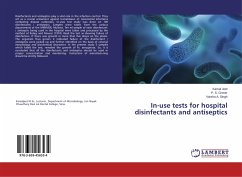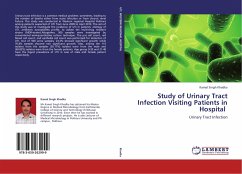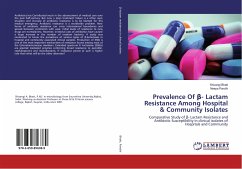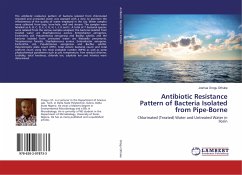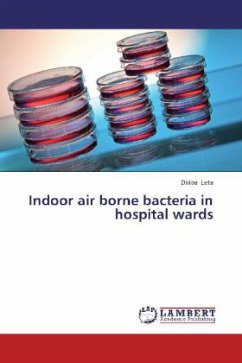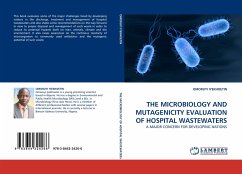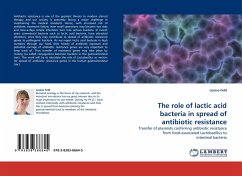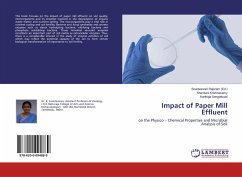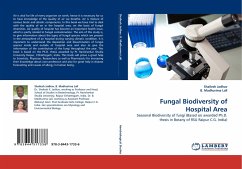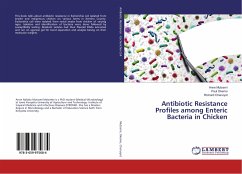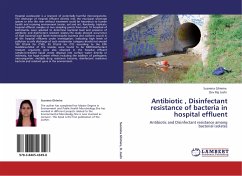
Antibiotic , Disinfectant resistance of bacteria in hospital effluent
Antibiotic and Disinfectant resistance among bacterial isolates
Versandkostenfrei!
Versandfertig in 6-10 Tagen
32,99 €
inkl. MwSt.

PAYBACK Punkte
16 °P sammeln!
Hospital wastewater is a reservoir of potentially harmful microorganisms. The discharge of hospital effluent directly into the municipal sewerage system or into the river without treatment could be hazardous to human health and receiving environment (water, soil and air). Randomly, triplicate hospital effluent samples at two sampling points from each 10 hospitals of Kathmandu were selected to determine bacterial load and presence of antibiotic and disinfectant resistant solates.The study showed occurrence of high bacterial load (both heterotrophic bacteria and coliform count) in all the hospit...
Hospital wastewater is a reservoir of potentially harmful microorganisms. The discharge of hospital effluent directly into the municipal sewerage system or into the river without treatment could be hazardous to human health and receiving environment (water, soil and air). Randomly, triplicate hospital effluent samples at two sampling points from each 10 hospitals of Kathmandu were selected to determine bacterial load and presence of antibiotic and disinfectant resistant solates.The study showed occurrence of high bacterial load (both heterotrophic bacteria and coliform count) in all the hospital effluents under investigation, indicating high levels of pollution as safe discharge of such wastewater category should not exceed 100 CFU/ml for (TVB), 30 CFU/ml for (TC) according to the EPA Guidelines.Most of the isolates were found to be MDR.Disinfectant resistant organisms were also observed in the hospital effluent sample.Untreated liquid waste disposal into surface water directly or indirectly, has huge number effects including the addition of pathogenic microorganism, multiple drug resistance bacteria, disinfectant resistance bacteria and resistant gene in the environment.



